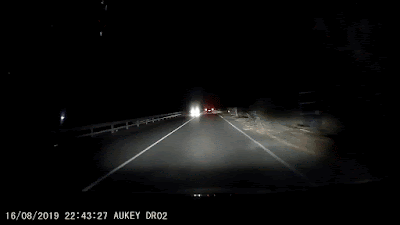During the 2-month period May through June 2019, 11 new comets were discovered and there were 2 comet recoveries. "
Current comet magnitudes" & "
Daily updated asteroid flybys" pages are available at the top of this blog (or just click on the underline text here). See below for the "Other news" section.
The dates below refer to the date of issuance of CBET (Central Bureau Electronic Telegram) which reported the official news & designations.
- Comet Discoveries
May 04 Discovery of C/2019 H1 (NEOWISE) (CBET 4623)
May 13 Discovery of C/2019 J2 (PALOMAR) (CBET 4626)
May 23 Discovery of C/2019 K1 (ATLAS) (CBET 4629)
May 23 Discovery of C/2019 J3 (ATLAS) (CBET 4630)
May 24 Discovery of C/2019 JU_6 (ATLAS) (CBET 4631)*
Jun 24 Discovery of C/2019 K4 (YE) (CBET 4636)
Jun 28 Discovery of C/2019 K5 (YOUNG) (CBET 4637)
Jun 28 Discovery of C/2019 L1 (PANSTARRS) (CBET 4640)
Jun 28 Discovery of C/2019 L2 (NEOWISE) (CBET 4641)
Jun 30 Discovery of C/2019 K1 (ATLAS) (CBET 4643)
* Apparently asteroidal object that was discovered on CCD images obtained on 2019 May 12.5 with a 0.5-m reflector at Haleakala in the course of the "Asteroid Terrestrial-Impact Last Alert System" (ATLAS) search program), and given the minor-planet designation 2019 JU_6 by the Minor Planet Center (cf. MPS 996641; orbit on
MPEC 2019-J141 from a two-day arc), has been found to show cometary appearance by CCD astrometrists elsewhere.
Jun 03 Recovery of P/2000 S4 (LINEAR-SPACEWATCH) as P/2019 K2 (CBET 4633)
Jun 04 Recovery of P/2007 R1 (LARSON) as P/2019 K3 (CBET 4635)
- Other news
May 01 Miklós Lovas, most successful Hungarian discoverer, has passed away at the age of 88 years on April 18th. He discovered 42 supernovae, 5 comets (including 93P & 184P) and 2 unusual minor planets at the Konkoly Obs. between 1964 and 1995
via K. Sárneczky

May 10 (CBET 4624) OUTBURST OF 15-BOOTIDS METEOR SHOWER - P. Jenniskens, SETI Institute and NASA Ames Research Center, and E. Lyytinen, Finland, report activity of the 15-Bootid meteors (IAU shower 923, code FBO) between 2019 Apr. 21d22h01m and 22d00h13m UTC, corresponding to solar longitude 31.24-31.34 degrees (equinox J2000.0). Six 15-Bootids were detected between 22h01m and 00h12m UTC by the low-light video cameras of the CAMS BeNeLux network (coordinated by C. Johannink) during routine observations that were made during 19h50m-03h15m UTC that night. The orbital elements bear some resemblance to those of the bright comet C/539 W1 (parabolic orbital elements q = 0.16 +/- 0.15 AU, i = 19 +/- 6 deg, Argument of Perihelion = 246 +/- 40 deg, Node = 33 +/- 20 deg; cf. Hasegawa 1979, PASJ 31, 257). The broad 2-hr duration of the shower, presumably requiring somewhat higher ejection velocities, is consistent with a relatively large comet.
May 17 (CBET 4627) NEW SATELLITE AROUND (31) EUPHROSYNE - P. Vernazza, B. Carry, F. Vachier, J. Hanus, J. Berthier, B. Yang, F. Marchis and the HARISSA team report the discovery of a satellite around minor planet (31) Euphrosyne. They observed (31) Euphrosyne with the Very Large Telescope (+ SPHERE/ZIMPOL) at six different epochs between 2019 Mar. 15 and Apr. 10. On Mar. 15.301 UT, the satellite was at a separation of 0".398 arcsec (projected separation 651 km) in p.a. 268.49 degrees; on Apr. 10.109, the satellite was found at a separation of 0".384 in p.a. 87.0 degrees. Based on these detections, the mean magnitude difference through an N_R filter (central wavelength 645.9 nm; bandwidth 56.7 nm) between (31) and its companion is 8.0 +/- 0.8, implying a diameter of about 6 km. Preliminary orbit computation indicates an orbital period of about 1.2 days for the satellite, with a semi-major axis of 677 km.
May 17 CBET 4628, CBET 4632 (May 29), CBET 4634 (Jun 03) report that the following minor planets are binaries systems: (2873) BINZEL, (72036) 2000 XM44 & (1344) CAUBETA
 |
| Credit: Peixinho et al. |
 |
| Credit: ESO |
 |
| : NASA/JPL/University of Arizona |
Jun 28 (CBET 4638)
2019 MO - An 18th-magnitude fast-moving asteroidal object, detected on June 22.3 and 22.4 UT with the Pan-STARRS2 1.8-m Ritchey-Chretien reflector at Haleakala and the ATLAS 0.5-m reflector at Mauna Loa and designated 2019 MO by the Minor Planet Center on MPEC 2019-M72 (which contains astrometry and orbital elements),
impacted the earth's atmosphere around June 22.896 UT. It was evidently detected in daylight satellite imagery over the Caribbean Sea. The absolute magnitude of 29.3 suggests a size prior to entry on the order of 3-4 meters. This is fourth known object to hit the earth's atmosphere after detection in space prior to impact (cf. CBET 4519).
Jun 29 (CBET 4642) JUNE EPSILON OPHIUCHID METEORS - P. Jenniskens, SETI Institute and NASA Ames Research Center, reports unusual activity of the June epsilon Ophiuchids shower (IAU shower 459, code JEO) between 2019 June 19d08h and 26d05h UTC, corresponding to the solar longitude range 87.5-94.1 degrees, with most activity between solar longitude 89.3 and 93.3 degrees, centered on 92.11 degrees (equinox J2000.0). Eighty-eight June epsilon Ophiuchids were detected by
CAMS camera network on June 19-26. The orbital elements resemble those of the Jupiter-family comet 300P/Catalina (q = 0.826 AU, a = 2.695 AU, i = 5.69 degrees, Peri. = 222.75 degrees, Node = 95.81 degrees, and longitude of perihelion 318.56 degrees. The outburst confirms the existence of this otherwise minor shower (cf. Rudawska and Jenniskens 2014, Meteoroids 2013, p. 217) and offers evidence of past activity of its parent body.
Bright June epsilon Ophiuchid shower meteor captured on 2019, June 24
 |
| Credit: Rancho Mirage Observatory (Eric McLaughlin) |
by Ernesto Guido

















































